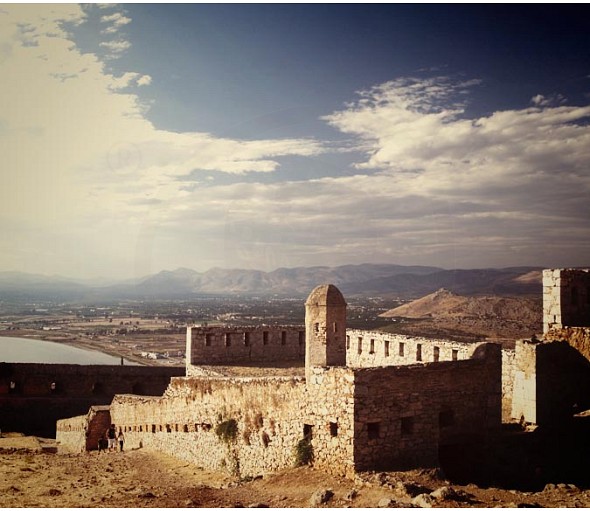Argolida extends to the eastern tip of the Peloponnese peninsula. It constitutes a challenge for historical, cultural and naturalistic exploration. Nafplio, also known as the "first capital of Greece” during recent historical times, manages without a doubt to enchant its many visitors. Its cobblestone streets, Venetian castles, neoclassical mansions, Turkish fountains, historical churches, and its boat rides on crystal clear water, all add to the magic of this magnificent and beautiful town. One is awe-struck when visiting the ancient palace of Atrides in the area of Mycenaes, the cyclopean walls of ancient Tiryns and the outstanding ancient theatre of Epidaurus – a theatre most famous for its excellent acoustics and where many a visitor goes during the Summer Festival, to watch a play. Low hills with olive groves and vineyards, enormous rocks with deep gorges and prickly pear trees, along with totally wind-protected coves with fish taverns, all form the natural landscape of Argolida.
On the southeastern coast of the Prefecture of Argolida, there is an area of unrivalled natural vistas and breathtaking beauty: Ermioni (Hermione). It is a small, coastal town whose scenic, island-like architecture and ambiance captivates visitors at first sight. Amphitheatrically built on Pronos Hill, in one of the most picturesque nooks of the Argo-Saronic Gulf, Ermioni is one of the most attractive areas of the Peloponnese that has become a preferred tourism destination as it affords its visitors unforgettable holidays. Ermioni has been uninterruptedly inhabited since 3000 BC. Its ancient inhabitants were mainly engaged in the processing and trading of Porphyra (Imperial Purple), a natural dye secreted from a saltwater snail. Porphyra was highly prized in antiquity and was a status symbol with which royal and imperial garments were dyed including the garments of Alexander the Great.
Ermioni is famous worldwide for each numerous beaches and crystal-clear waters which are surrounded by verdant pine tree forests and promise one-of-a-kind escapes. In the town’s center, visitors can see the Church of Taxiarches. It has been looking down from its lofty height since the 17th century when it was built on the spolia of an earlier temple dedicated to Demeter Chthonia. The location’s highest elevation promises a magnificent view to the scenic islands of the Argo-Saronic Gulf that no visitor should miss!







